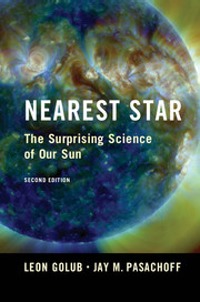Review: Nearest Starby Jeff Foust
|
| “To the extent that we have been assuming the constancy of the terrestrial and near-Earth climate, we are becoming more, rather than less, dependent on the constancy of the Sun,” they write. |
The book (an update of one they first published in 2001) offers that overview in a series of chapters that they argue in the book’s preface are “largely self-contained” and thus can be read in any order. Nonetheless, the reader may be best served by at least starting with the first few chapters, which provide an overview of the Sun, its lifecycle, and what’ve learned from studying the Sun both at visible wavelengths of light and other means. The last several chapters are really more standalone essays, covering eclipses, space missions, and the effects the Sun has on both terrestrial climate and space weather.
The authors describe their book as one “for the non-scientific reader who wants to gain a general idea of the range and significance of solar physics.” Nearest Star does provide that comprehensive overview, although the level of detail (including an occasional equation) may be too much for the scientific neophyte; instead, this may be a better book for those people with some knowledge of, or at least strong curiosity about, science who want to expand their understanding of the Sun. The book’s writing style is straightforward, although not without the occasional wry comment: they note, for example, that “there are nearly as many flare theories as there are flare theorists.”
At the end of the book, Golub and Pasachoff make the case that studies of the Sun are more important than ever, and are not simply an academic exercise. “To the extent that we have been assuming the constancy of the terrestrial and near-Earth climate, we are becoming more, rather than less, dependent on the constancy of the Sun,” they write, referring to the threats posed by changing climates and by space weather. This dependency, they argue, makes studies of the Sun more vital than ever: “our planet’s fate, as well as our ability to prosper as a human community is not only tied to the Sun, but also to our understanding of the Sun.”
